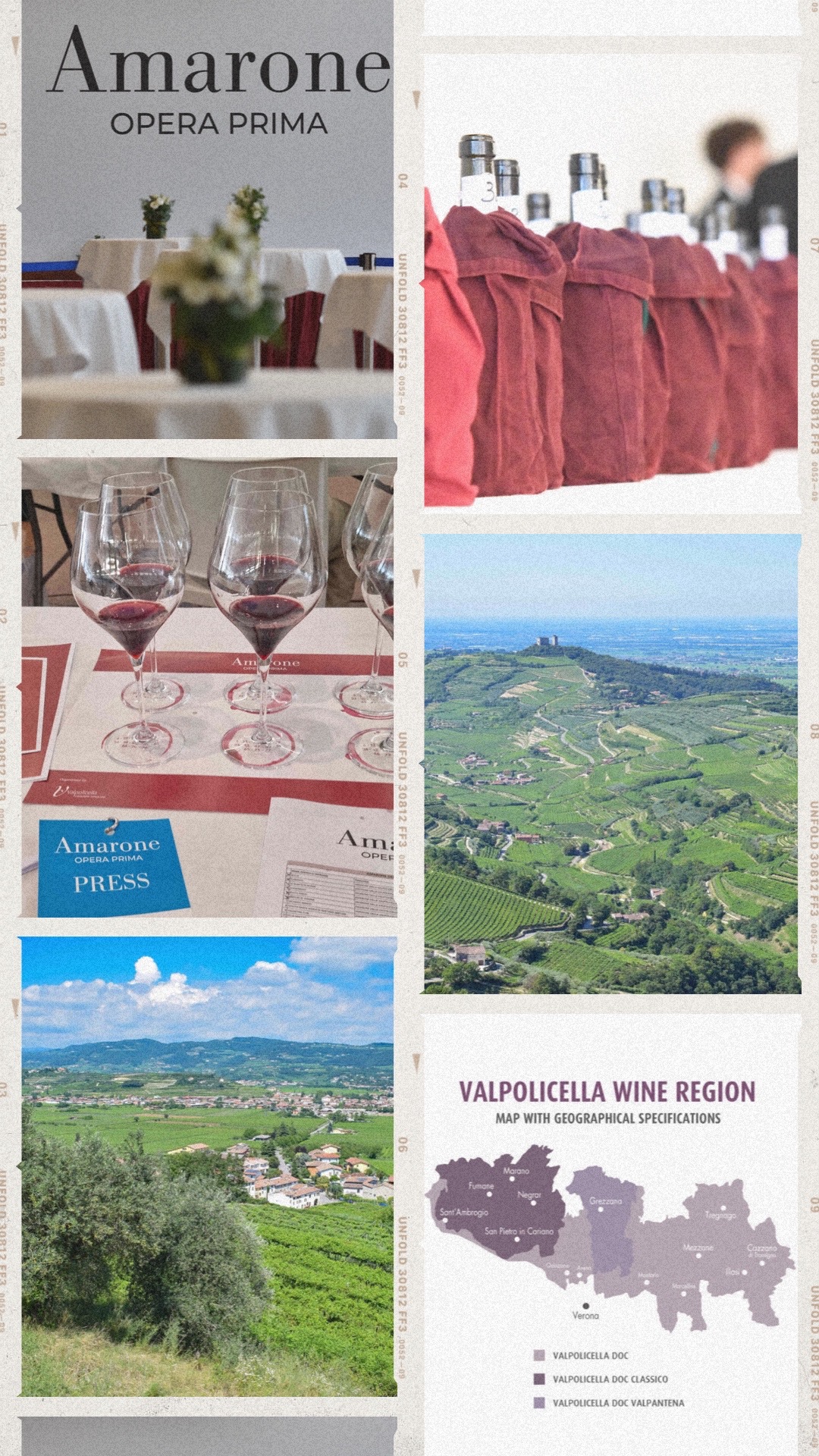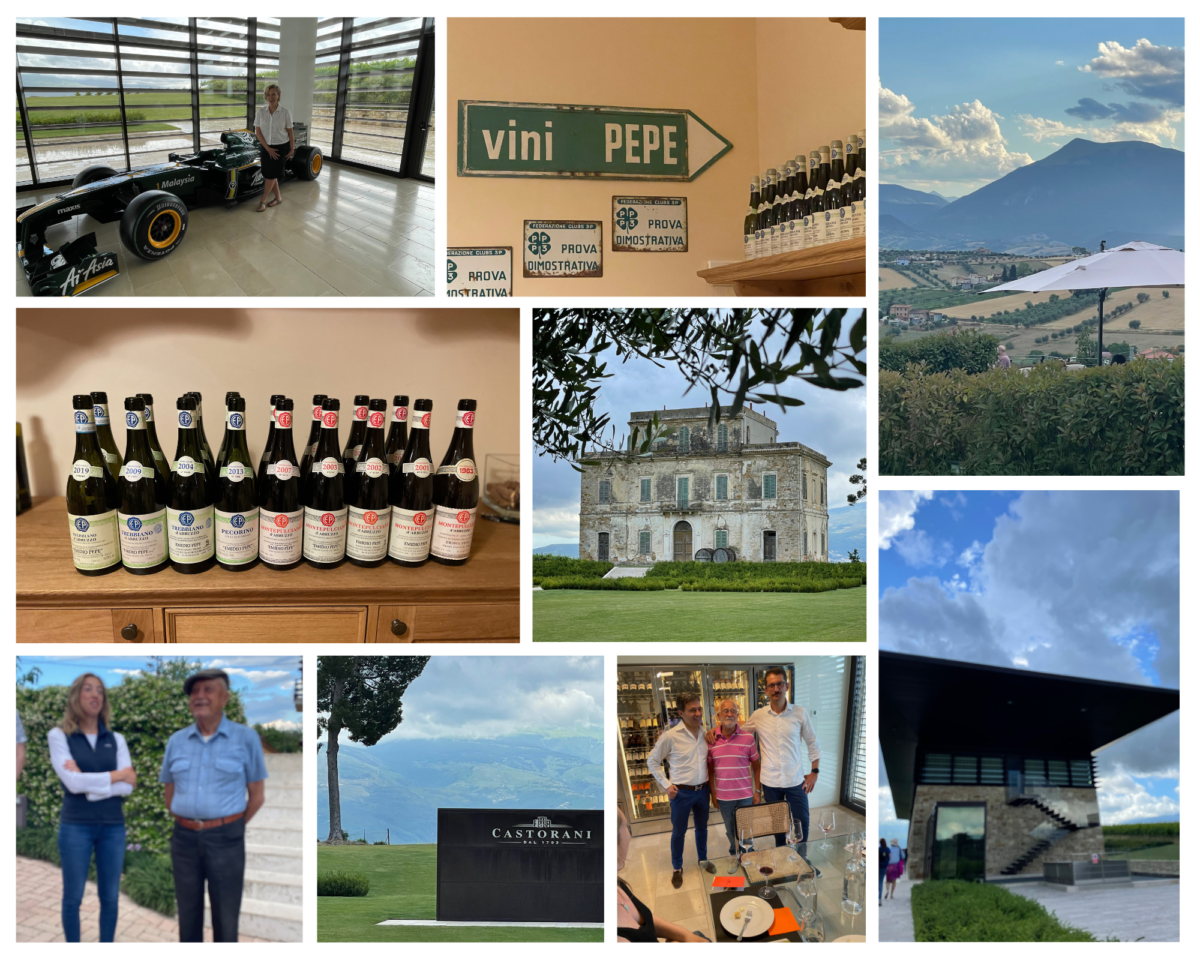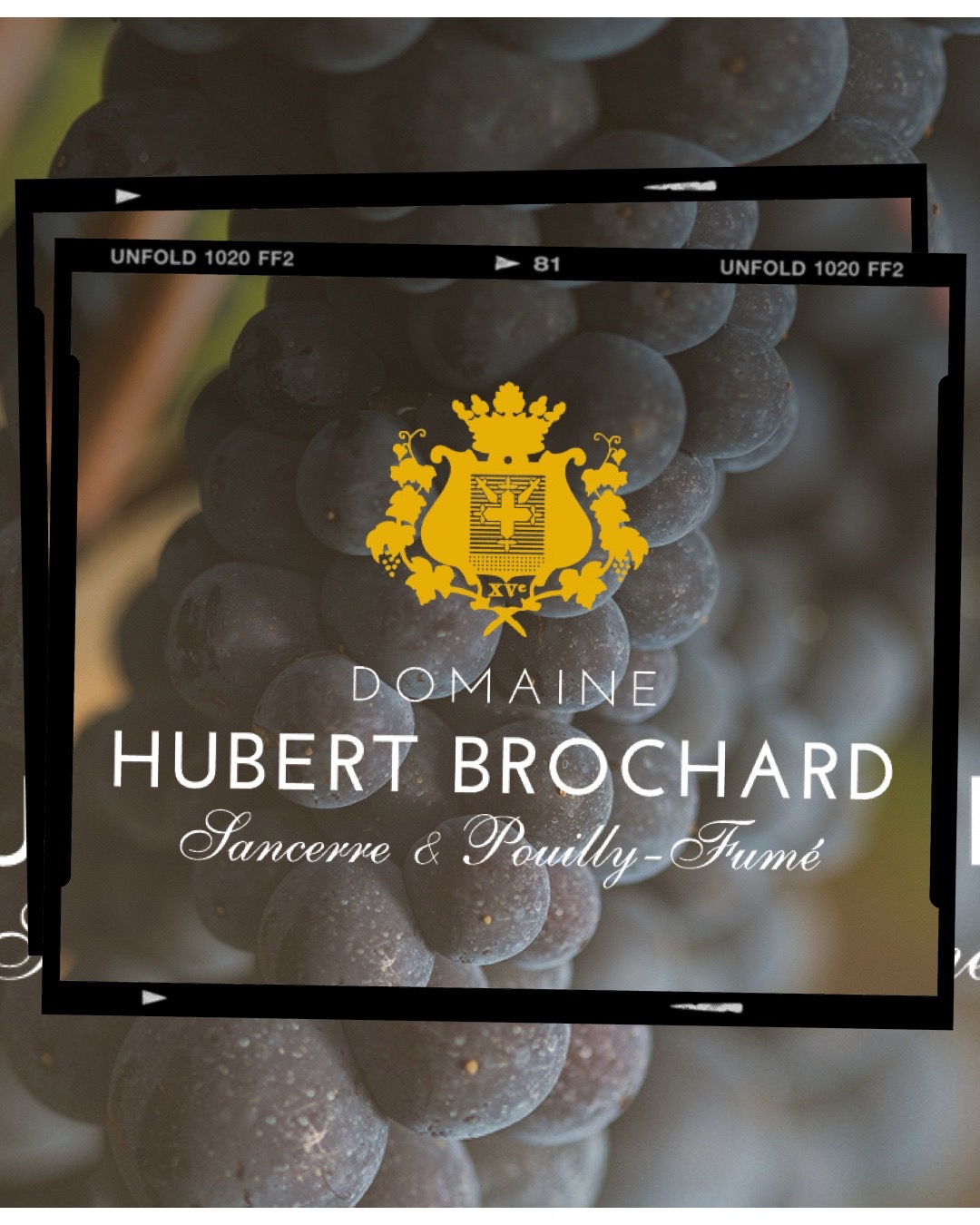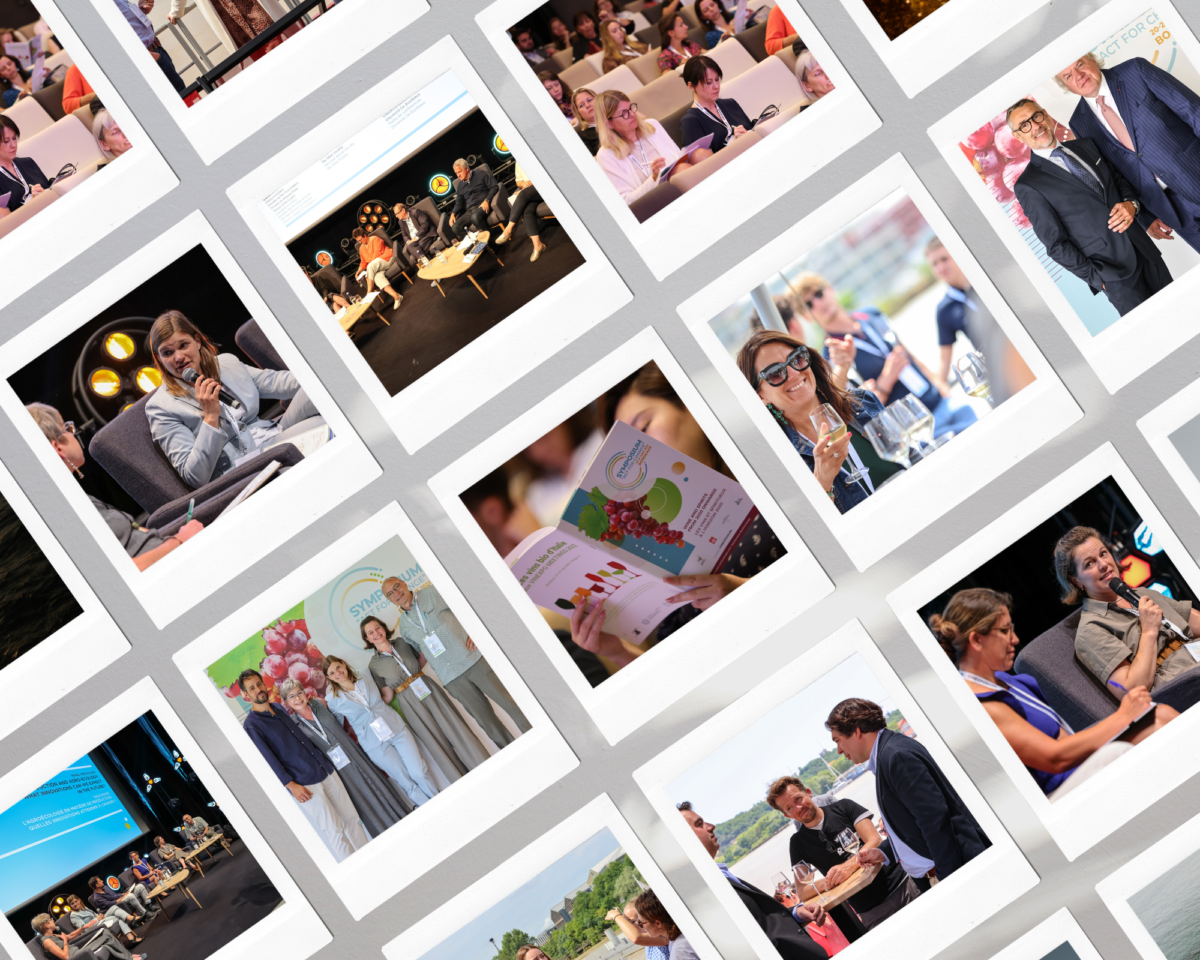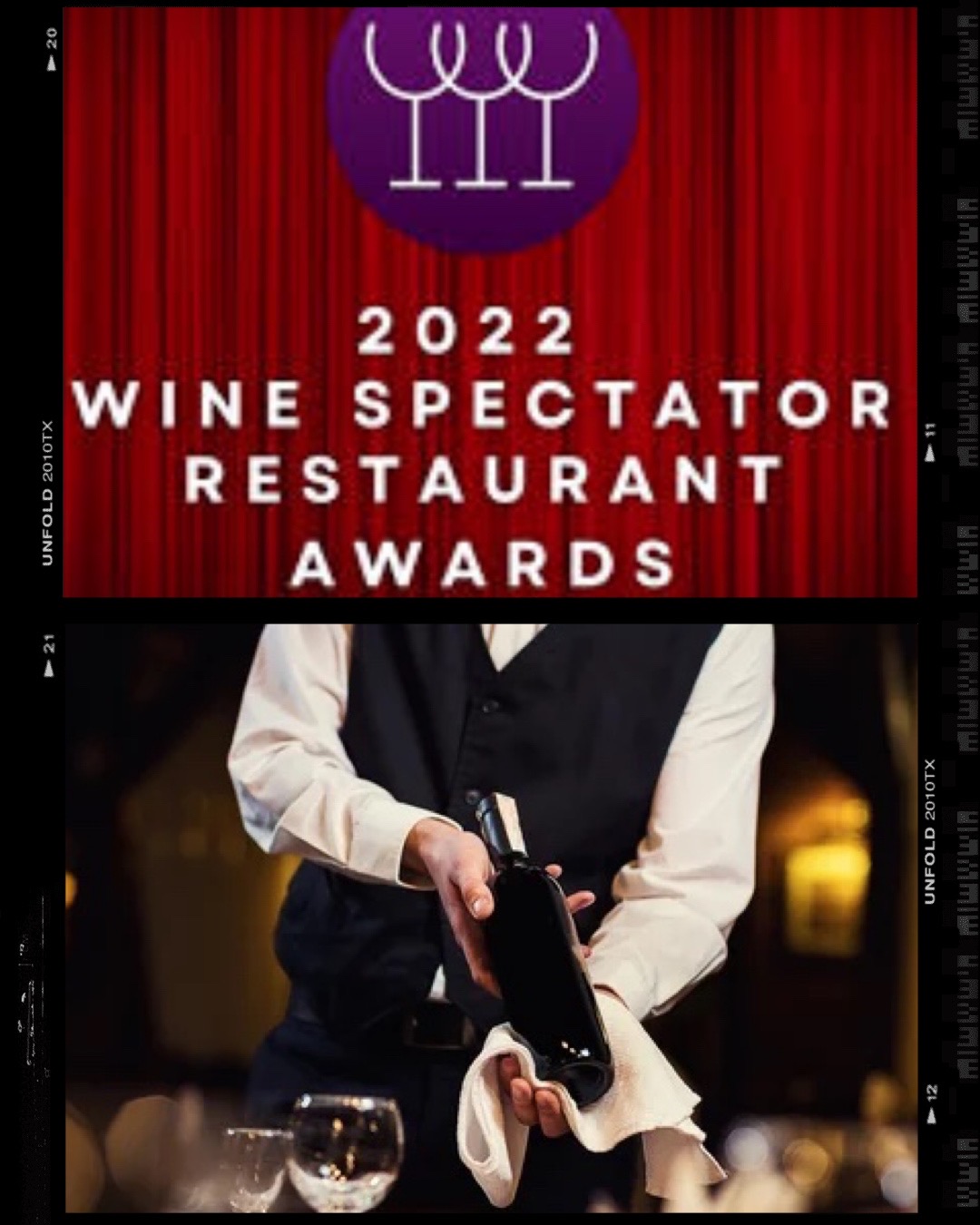The body and intensity of Amarone is traditionally associated with winter months – wonderfully enjoyed in front of a warm, cozy fire.
In fact, the anteprime, dedicated to Amarone della Valpolicella, is always held in the early, frigid months of the year.
The 2022 Edition was unique in every aspect. It was held, for the first time, in the summer from 17th to 20th June. The objective of the Consortium of Valpolicella was to demonstrate and enhance the versatility of the wines of this area, aiming to reimagine Amarone from a ‘challenging’ wine that is mostly paired with game dishes to a more contemporary-styled-wine, balanced with less concentration and more fitness. On this concept, the first exclusive masterclass “Amarone 4wd, off the beaten track” was held June 18th at Palazzo Verità Poeta, which also opened the program for Amarone Opera Prima. The masterclass shed a spotlight on pairings with cuisines from four corners of the earth, accompanied by 4 different expressions of the territory of Valpolicella. The challenge was assisted by Nicola Portinari, a two Michelin-starred chef at La Peca in Lonigo.
In this extraordinary event of the previews of the 2017 vintage of Amarone, the Consortium of Valpolicella wanted to mix the masterful wine production from this area with the other flagships and absolute attractions of the Italian territory: history, art, culture, and music. On the night of the 18th, the 100 wine writers from 20 different countries, were invited to attend the Aida Opera by Verdi in the beautiful frame of the Roman Arena di Verona. An amazing moment that everybody enjoyed, before the grand tasting of Anteprima Amarone the following day in the Palazzo della Grand Guardia (in the heart of Verona).
An Overview of an Iconic Wine Territory
In the center of Northern Italy, located in an extraordinary and unique microclimate is the wine district of Valpolicella. Home of masterpieces including Amarone, Recioto, Ripasso, Valpolicella and Valpolicella Superiore. This wine region is a jewel of the Italian wine tradition. The area is characterized by a moderate continental climate. Many factors maintain this extraordinary pedoclimatic balance. The Northern border is occupied by the Monti Lessini plateau, probably the most important area from which the most valuable grapes of the DOC are harvested and shielded against cold currents from the Alps. Going South, the land assumes flatter features, a luminous valley that reaches the banks of the River Adige. To the West, the borders of the DOC touch the famous “neighboring” wine district of Bardolino, on the shores of the fascinating Lake Garda that has major influences on the entire climate of the area. It maintains mild winters and ensures excellent ventilation. To the East, the city of Verona raises the cultural and historical center of this bright area. The Valpolicella Classica, it is located in the northern area of the wine district and includes the towns of Marano, Fumane, Sant’Ambrogio, Negrar and San Pietro in Cariano.
On the beautiful rolling hills, we can find soils with poorer characteristics, with a major presence of limestone, clay and volcanic soils. These are the more preferred areas for the production of wines – they have great balance and complexity, there is also a longer growing season and the wines are more concentrated and have high acidity. To the East of the classic area the DOC enclave the territories of Valpantena, and Valpolicella DOC.
Valpolicella, the Eldorado of Wine Travelling
With its 240 km2 the Valpolicella has an ancient heritage, the name itself may refer to “the valley of the many wineries”. Viticulture and winemaking have been rooted here for centuries. A charming valley with stretches of vineyards framed by traditional marogne (dry stone walls). Historic territory, precious, where the interweaving of autochthonous varieties give life to incredible high-end wine production, the result of traditional techniques settled over time. Wines are linked to a territory that every year attracts wine lovers, professionals, and collectors eager to know and deepen themselves into the different interpretations of Valpolicella, in particular its Amarone. The rolling hills are decorated by orchards and olive groves, small family-run wineries and famous wineries in the elegant Venetian Villas, now converted to wine resorts for an immersive experience. This place is a precious piece of Italian history.
Heading South-East, Verona rises the heart of the wine area. The hometown of Vinitaly, the yearly wine fair at the beginning of April where more than 4,000 producers gather from every region of Italy, trying to impress wine lovers from all over the world with tastings, seminars and talks. The “City of Love” and the scenario of the intense passion between Romeo and Juliet. The City of the Arena and its Opera, home of the famous Piazza delle Erbe, and undisputed flagship of Italian lives. To the East you can choose the enchanting Verona; the West side opens up to Lake Garda. A lake destination that can be chosen by those who want to visit the charming hamlets and small villages on the shores, alternating days of tastings with boat rides, long walks of different intensities, water sports and sensational fish meals. In order to help the guests in this extraordinary territory, a mobile app has been developed that has the task of directing the eno-curious towards the experience that is adduced more, being able to choose from a wide range of options.
Tastings Amarone della Valpolicella Docg 2017
2017 showed lovely ripe fruit and good aromatic intensity. In general, I tasted great wines rich in structure, with persistent fruit, well-balanced with firm tannins. A sufficient level of acidity guarantees freshness to almost all wines. This shows the hard work of the producers during an uneasy season.
BERTANI – AMARONE DELLA VALPOLICELLA DOCG VALPANTENA 2017
Colour ranging from ruby core to light garnet rim. Intense flavour of ripe plum with balsamic notes of mint. A hint of vanilla. Rich in structure, with persistent ripe fruit, well balanced with soft tannins. Fresh long finish. A great wine.
CA’ LA BIONDA – AMARONE DELLA VALPOLICELLA DOCG CLASSICO 2017 “RAVAZZOL”
Deep ruby colour. Rich bouquet of black cherry with hints of violet. Round, full body and warm. Good structure with quite delicate tannins and long length. Lovely wine.
CA’ RUGATE – AMARONE DELLA VALPOLICELLA DOCG 2017 “PUNTA 470”
Ruby core with narrow light rim. Great nose with ripe plum, spicy notes of licorice and rhubarb. Slight notes of leather. A full-body wine with good freshness. Present delicate tannins and quite a long aftertaste. I like it.
GERARDO CESARI – AMARONE DELLA VALPOLICELLA DOCG CLASSICO 2017
The colour is medium ruby with a compact rim. Pronounced intensity of ripe red fruit mixed with notes of chocolate and tobacco. Medium body with ripe red fruit and freshness. Moderate coarse tannins. Quite a long finish. I really appreciated it.
FALEZZE DI LUCA ANSELMI – AMARONE DELLA VALPOLICELLA DOCG 2017 “FALEZZE”
Bright with intense core and paler rim. The wine displays ripe red fruit and floral notes of violet with hearty overtones. Exuberant and full body in the palate, elegant fruit and velvety tannins. Long, fresh finish. A very good wine.
LA COLLINA DEI CILIEGI – AMARONE DELLA VALPOLICELLA DOCG 2017 “CILIEGIO”
Brillant with a deep ruby core. Pronounced bouquet of blackcherry, dried prune and fig. Overtones of coconut and the scent of tobacco. Good structure with firm, velvety tannins and long length. A wine with a personality.
MONTE ZOVO FAMIGLIA COTTINI – AMARONE DELLA VALPOLICELLA DOCG 2017 “MONTE ZOVO”
Brilliant, deep garnet colour with compact rim. Various and intense aromas of ripe plum, blackberry and raisin. Full body with discrete alcohol level and soft tannins. Long finish. A delicious wine.
SALVATERRA – AMARONE DELLA VALPOLICELLA DOCG CLASSICO 2017
Medium garnet core, paler on the rim. The nose shows the beautiful flavour of blueberries. Spicy with a hint of anise. The palate is elegant with overtones of black cherry and fig. Dry, medium plus body, silky tannins and a long finish. A great wine.
AZ AGRICOLA VIGNA ‘800 – AMARONE DELLA VALPOLICELLA DOCG CLASSICO RISERVA 2017 “VIRGO MORON”
Garnet red with a paler tinge. It displays an intense flavour of dark cherry and raspberry with light earthy overtones. Juicy and vibrant with a medium-bodied palate, firm tannins with a light smoky hint at the end. I have really appreciated this wine.
VIGNETI DI ETTORE – AMARONE DELLA VALPOLICELLA DOCG CLASSICO 2017
Deep ruby red with paler reflections. Pronounced intensity of ripe red fruit mixed with notes of chocolate and tobacco. Smooth and delicious palate with delicate tannins and quite a long aftertaste present. A great wine.
#winelover #Italy #amarone #amaroneoperaprima #Valpolicella #Valpolicellawines #winetasting #amaronelovers #italianwine #italianwinelovers #winetrade #winetourism #winereviews

